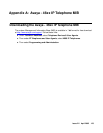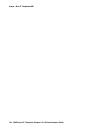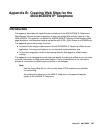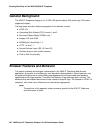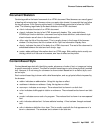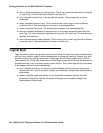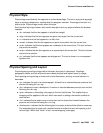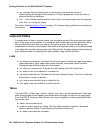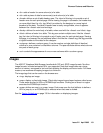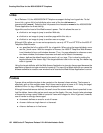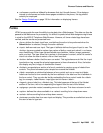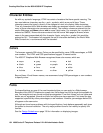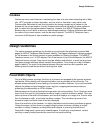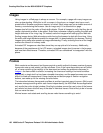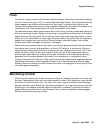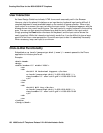
Browser Features and Behavior
Issue 2.2 April 2005 131
● <th> adds a header for some column(s) of a table.
● <td> adds a piece of data for some row(s) and column(s) of a table.
● <thead> defines a set of table header rows. The intent of this tag is to provide a set of
header rows for each printed page. While viewing the page in a browser, the header has
no more effect than the <th> tag. What it provides for the designer is a more logical
breakout of the data. The table’s header area is easily recognizable, since it appears
between the <thead> start and end tags.
● <tbody> defines the main body of a table, when used with the <thead> and <tfoot> tags.
● <tfoot> defines a footer for a table. This tag can contain multiple rows. Like the <thead>
tag, the intent of this tag is to provide a set of footer rows for each printed page. Viewing
the page in a browser has no additional effect. And like the <thead> tag, this tag provides
a logical breakout of the data for the designer.
● <colgroup> defines a column group. It can be used as a single definition of identical
columns or as a container for dissimilar columns. The span attribute defines what columns
are parts of each group.
● <col> controls the appearance of one or more columns within a column group.
Images
The 4630 IP Telephone Web Browser handles both GIF and JPEG image formats. No other
image formats, included animated GIFs, are supported. Note that images take up a large
amount of memory compared to text and that updating the display can be an issue. For these
reasons, we recommend keeping images to a minimum.
The image tags that can be used on the browser are:
● <img> displays an image.
● <map> display a client-side image. Client-side images have shaped regions called areas.
These areas are tied to URLs or ECMAScript functions. Clicking on an area in a region
executes the ECMAScript function.
● <area> defines an area in a <map> image. Each area uses the href attribute to define a
URL to jump to, or an ECMAScript to execute when that area is clicked.
See the Design Guidelines
on page 135 for information on displaying images.



